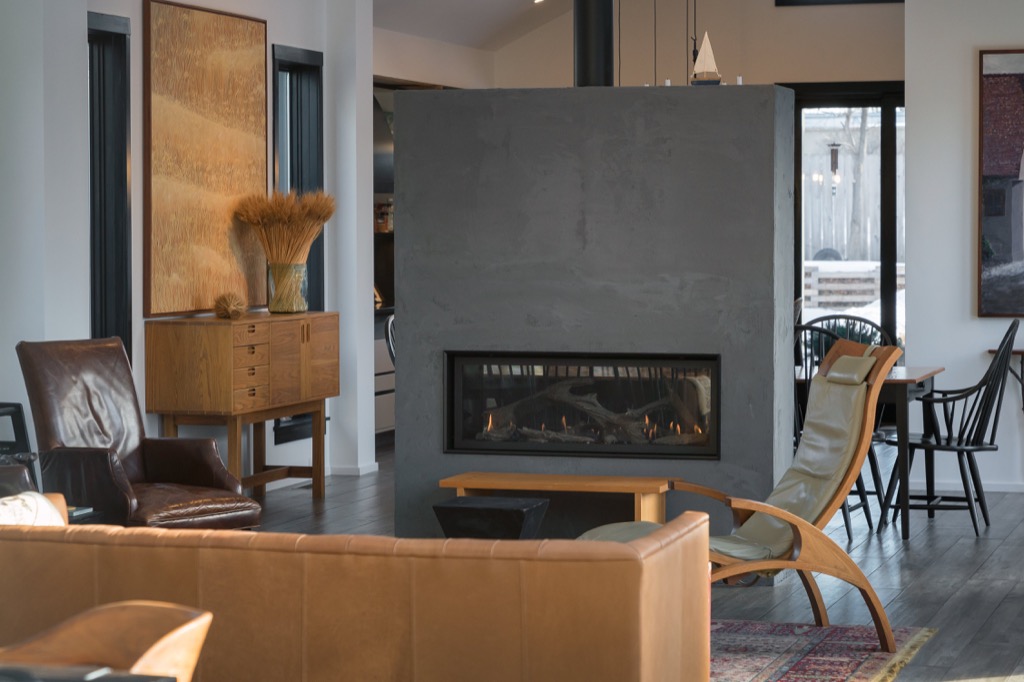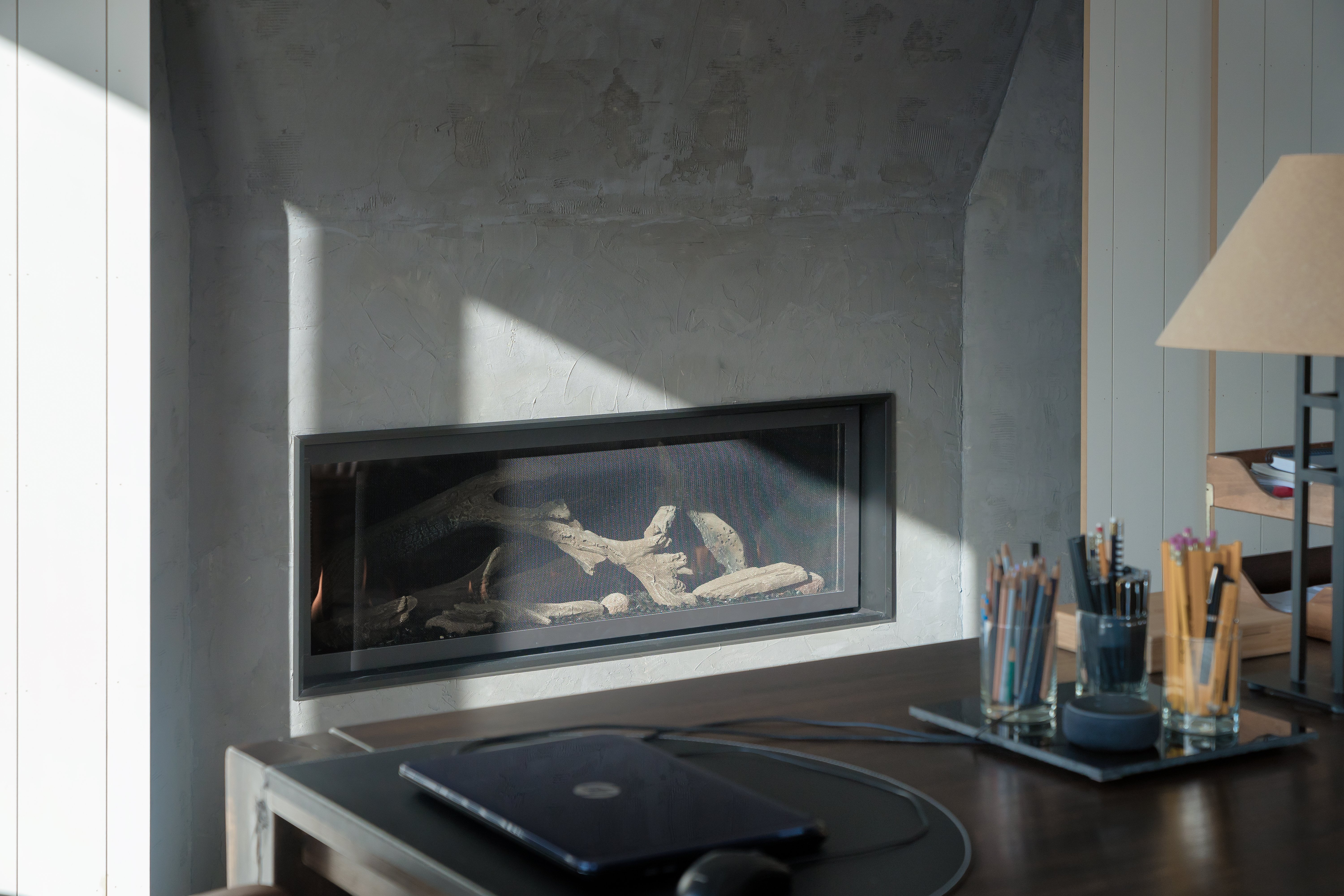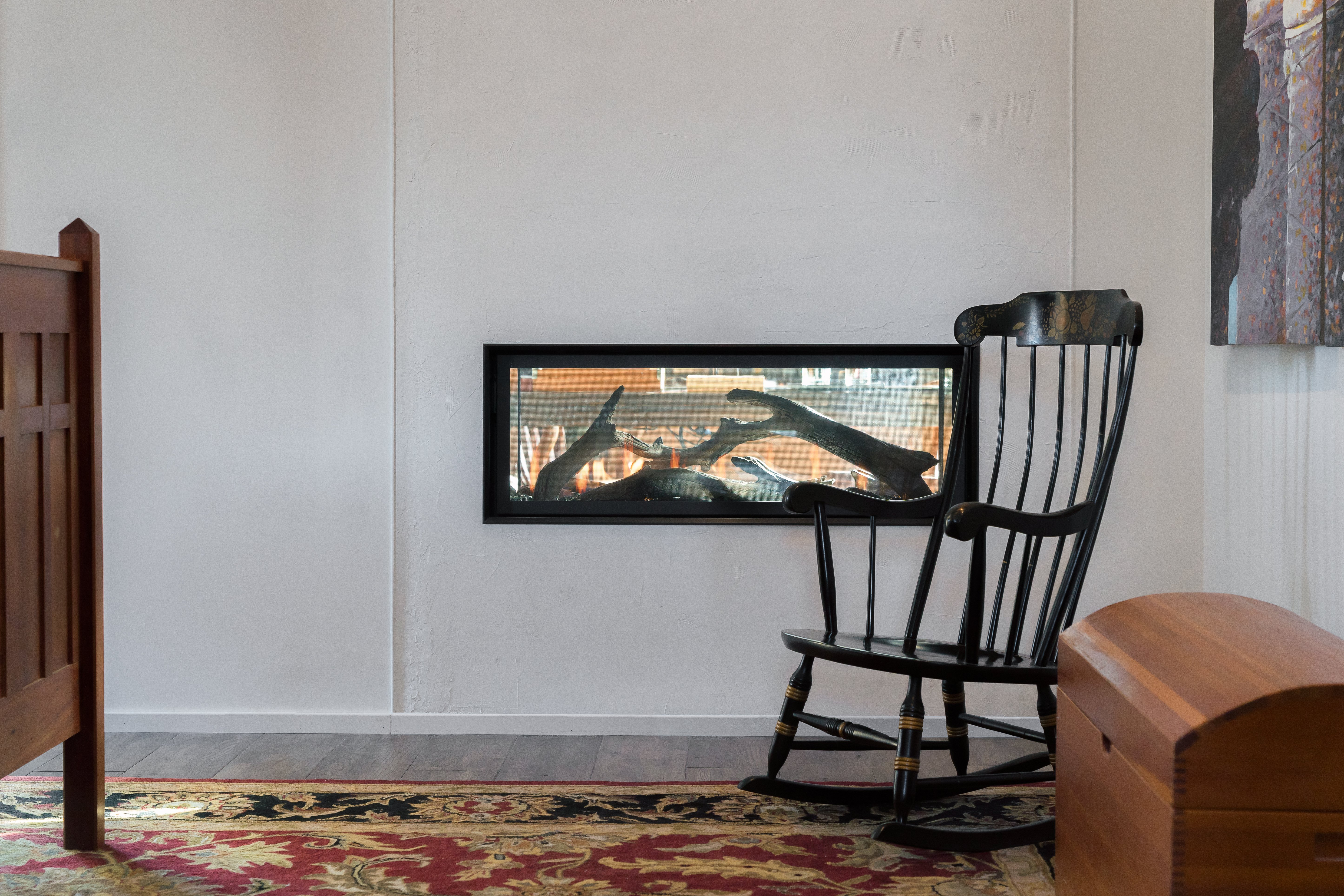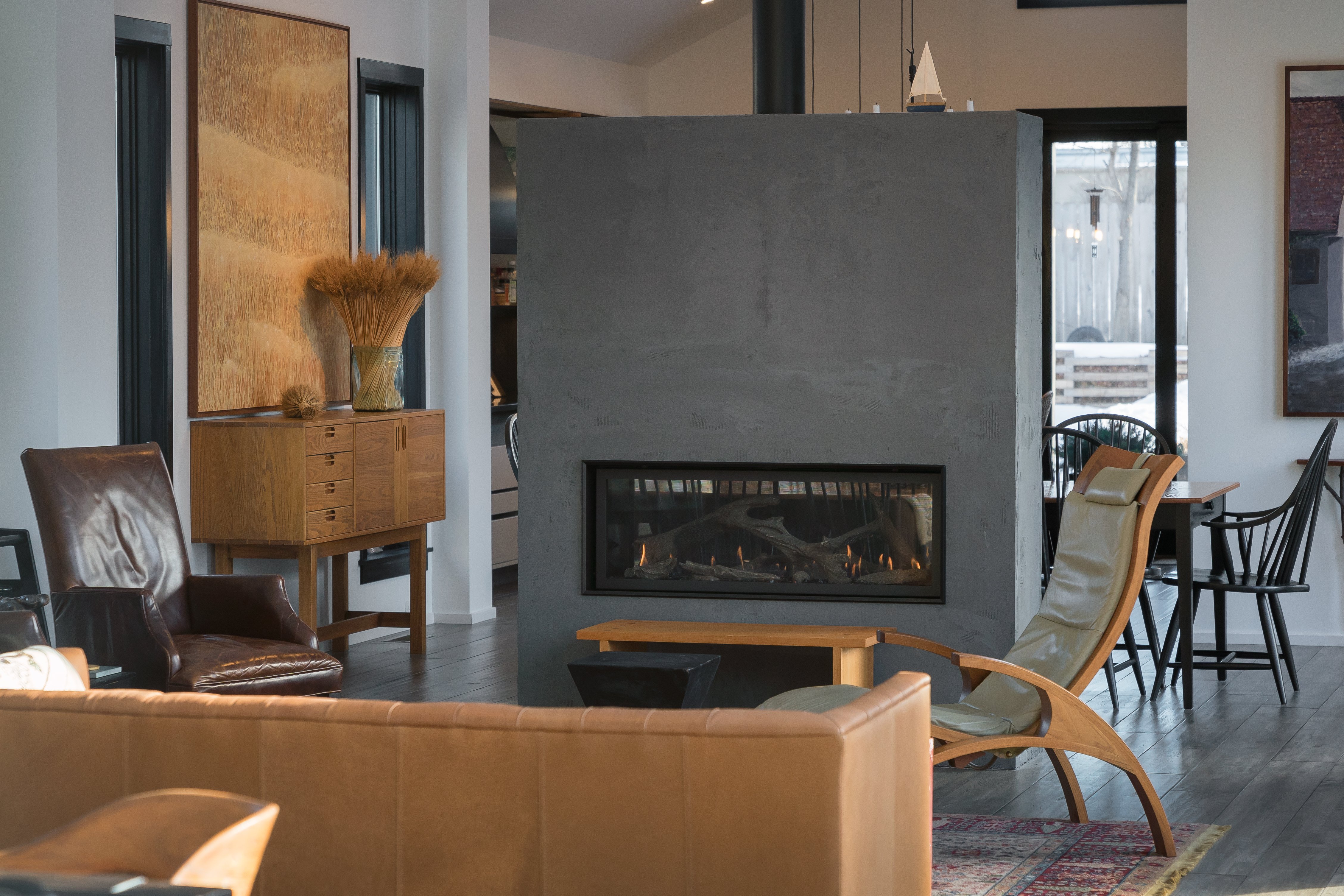Linear See Through Gas Fireplaces Solve for Energy Efficiency

This Edina couple, Margaret and Steve, used two linear see-through gas fireplaces and a design approach called, Human-Building Interaction (HBI) to build their new sustainable home.
The origin of HBI stems from systems theory. Systems theory as Peter Senge, (Author of The Fifth Discipline) describes it, is a “web of interdependence.” The interdependent elements of a system cannot operate independently and the system will not function without all of the elements. By centering their design around two see-through linear gas fireplaces, the elements of this home follow the principles of energy efficiency and functionality.
So Why Does Systems Theory Matter?
The goal of HBI is to promote the intended action of the occupants while conserving energy. Human Building Interaction tries to manage the negative, perhaps unintended, systemic outcomes of building systems on our environment.
Steve, a LEED (Leadership in Energy and Environmental Design) accredited architect, used two linear fireplaces as the focus of this, integrated, structure.
Click the image below to play the video. Special thanks to our photographer on this project Jordan Powers. www.jordanpowersphotography.com
Fireplaces Contribute to Efficiency and Comfort
This HVAC system was designed to include the heating capacity of the two fireplaces. An energy usage plan developed with the help of The Element Group energy consultants, allowed the owners to reduce the size of their heating equipment and thus limit emissions. The EPA provides a graph that compares energy use and emissions in regions of the United States to the National average. You can see how your region compares to the national average by going to this link.
“We live in a relaxed way between the rooms. They’re organized so that they flow from one to the other all the way from the big living area, which sometimes I call a studio because we combine both the sitting area and the work area with the computers and the desk. All the rooms are organized around the two fireplaces and they’re two-sided fireplaces, so we kind of thought that that was a way to get four fireplaces in effect.”
This view from their living space in the center of their home is where they enjoy the fireplace while entertaining or relaxing with a good book. They are able to enjoy the same fireplace from the other side when they gather in the kitchen and dining area.
Fireplaces Focus on Intentional Living
The fireplaces in this project offer a design element that is fundamental to the system in terms of the way the couple lives and in terms of the way the home functions. Zone heating is a popular way to increase home heating efficiencies. Zone heating allows homeowners to heat only the areas where they live. Take a look at this link for more information on zone heating.
Not only are these two fireplaces together able to produce 66,000 BTUs of heat, but they were also positioned on an axis to divide the bedroom/living and dining/kitchen, and can be viewed and enjoyed from every room in the house.

The fireplaces enhance the comfort of the occupants and they contribute beauty and energy efficiency to the living space.
Margaret and Steve selected the two linear fireplaces early in the process because the fireplaces were “major elements” of the design. The fireplace Xtrordinair Linear See-Through fireplaces were selected because of their size, function, and finishing choices.

This is the view from the owner’s suite bath where the fireplace can be enjoyed while taking a soak in the bathtub.
Responsible Stewards of the Environment
As an expression of their desire to minimize their carbon footprint, Margaret and Steve called on The Element Group energy consultants and "building scientists" to consult on the project. Their plan involved an energy audit which resulted in a combination of Leed Certified principles such as these:
- Site Selection
- Material Usage
- Water and Energy Usage
- Air Quality and Design
The Energy usage plan included an optimized HVAC plan. The heat from the fireplaces was calculated into the overall HVAC scheme which allowed the homeowners to reduce the size of the heating equipment. The two fireplaces combined with the AeroBarrierTM and the ERV (Energy Recovery Ventilators) and HRV(Heat Recovery Ventilators) means that their heating system will work more efficiently and will have a longer lifetime value. And according to Mike at The Element Group, most importantly, the "comfortability factor" is maximized for the occupants. Another advantage of this system is that as the air moves through the house it can be monitored and managed by the homeowner. Mike describes this process as “balancing” the airflow.
The Aero Barrier is a latex aerosol sealant that is applied with pressure to fill gaps in construction smaller than 1/2". The insulating qualities of the process seal the home from outside pollutants, smells, and noise. A blower door test is performed after the application in order to test the airtightness level. New home builders generally shoot for a level of 3.0 Air Changes Per Hour (ACH50), Zero Energy homes require 1-2.0(ACH50) and Passive Homes require no more than .3 (ACH50). The mechanical ventilation system of ERV and HRV exhausts stale indoor air and maintains interior moisture content. This is done with a system of fans and balancing dampers.
Residential Energy Code
A blower door test was required in order to comply with the residential energy code for the State of Minnesota. At 50 PA of pressure, the home had an air leakage rate of 390CFM, equaling .48ACH. The results demonstrate that the home meets and is under the maximum ACH of 3 for the State of Minnesota.
Minneapolis’ new energy disclosure policy requires “industry-standard assessments to reliably determine each purchasable property energy performance and how to improve it” Follow this link at the Center for Energy and the Environment for more information.
The report is meant to inform homeowners about attic and wall insulation, the heating system, windows and air-leakage. Suggestions for improvements are given to the prospective buyer but they are just suggestions and are not required for the sale of the house.

Architect, Artist and Craftsman
Steve did the interior construction, including tile work, wood flooring, cabinets and trim himself. Most of the wood furniture in the house, besides the Moser chaise, was built by Steve. He developed these skills in college while he worked part time as a furniture maker at a pipe organ factory.
This is the couples' second custom home. They raised their two daughters in their first home in Nebraska. The bench in front of the fireplace was refashioned from an antique drafting table. The beautiful sideboard in the dining room and the sailboat in the garage were built by Steve as well. And if building houses and furniture isn’t enough, most of the paintings and artwork are Steve originals too.
Margaret’s career as a senior aide for a US Senator in Washington D.C., took them to the East Coast for several years after their children were launched. Now they are back in the midwest to spend time with their granddaughter. We are grateful to have them in the Twin Cities. From the wheat fields of Nebraska to the monuments of Washington D.C.; their rich history is beautifully revealed in this new studio style, sustainably designed home.

